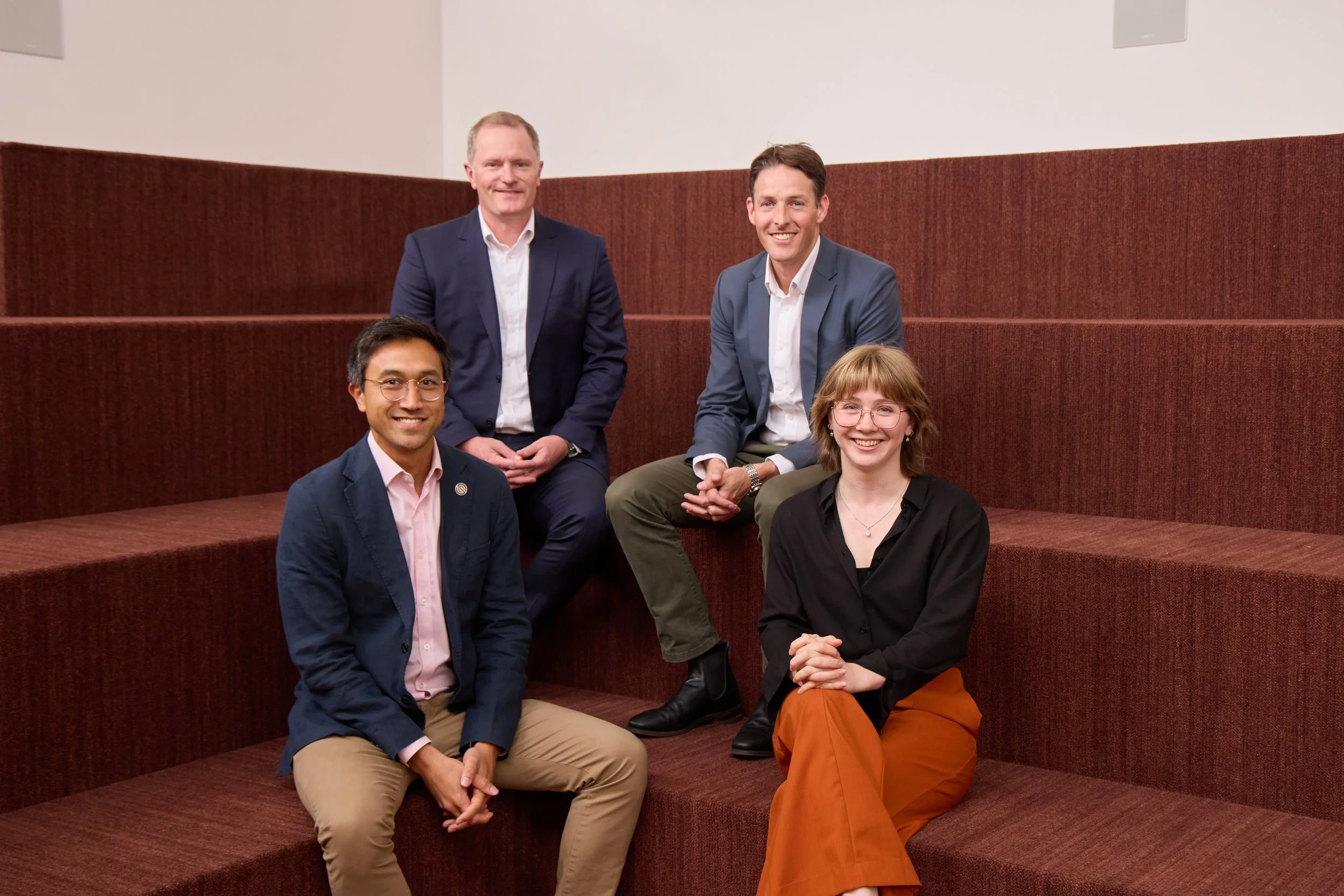HAMR Energy and Supercritical complete first phase of government-backed study to cut costs of LCLF
Luke Tan (Supercritical Co-founder), Alex Smith (HAMR Energy Co-founder), David Stribley (HAMR Energy Co-founder) and Charlie Singleton (HAMR Energy Engineering Research Analyst)
HAMR Energy and UK-based innovator Supercritical Solutions have completed the first phases of a groundbreaking feasibility study exploring next-generation, low-cost methanol production for hard to abate sectors. Supported by both the Australian and UK governments through the Renewable Hydrogen Innovation Partnership, this $1.5 million project aims to integrate Supercritical’s ultra-efficient, high-pressure electrolyser technology into HAMR Energy’s biomass-to-methanol process, unlocking new levels of efficiency in clean fuel production.
This week, the HAMR Energy and Supercritical Solutions team met in Melbourne with some of the industry’s leading players to share the progress of their collaboration.
What have we done in the project?
The initial study demonstrates how Supercritical’s high-pressure and high-temperature electrolysis can be integrated directly into methanol synthesis, eliminating the need for hydrogen compression and improving overall system efficiency.
The study is supported by a consortium of partners, including Astrimar Ltd, the UK’s Manufacturing Technology Centre (MTC), and Monash University in Melbourne. Together, we’re accelerating innovation at the intersection of hydrogen technology and low carbon fuel manufacturing.
These results build on the success of HAMR Energy’s flagship Portland Renewable Fuels project in Victoria, which will convert forestry residues and renewable hydrogen into 300,000 tonnes of low carbon methanol per year, helping to decarbonise ships and planes across global markets.
What have we learnt?
Key insights from the first study phases reinforce that integrating Supercritical's high-efficiency electrolysis into HAMR's hybrid fuel production can deliver cheaper, more efficient, low-carbon methanol when scaled. A major step toward making low-carbon fuels commercially unbeatable 📉⛽️.
Key learnings include:
Efficiency through integration: High-pressure hydrogen production aligns with methanol synthesis, cutting costs and simplifying plant design.
Scalability potential: The model supports industrial-scale renewable methanol and ammonia productions, which can make clean fuel more competitive than fossil fuels.
Collaborative advantage: The partnership demonstrates how government-backed, cross-border innovation accelerates clean energy technology commercialisation.
What next?
With the first phases complete, the project now moves into its final stage due for completion by the end of the year. This phase will prepare for Supercritical’s first-of-a-kind technology demonstration, paving the way to commercial deployment.
As Australia open Round 2 of its $2 billion Hydrogen Headstart Program, prioritising feedstock-based applications like shipping and aviation fuels, HAMR Energy’s model of integrating forestry residues with renewable hydrogen continues to gain momentum.
Read the full media release attached below:
Media Coverage:




